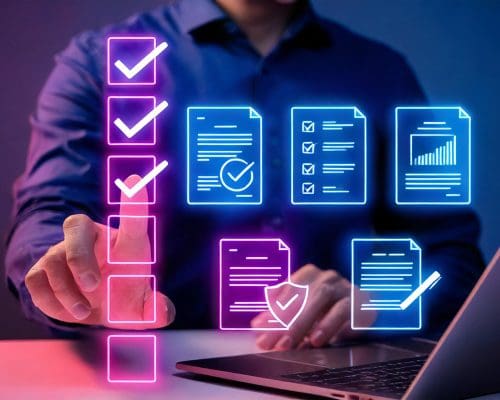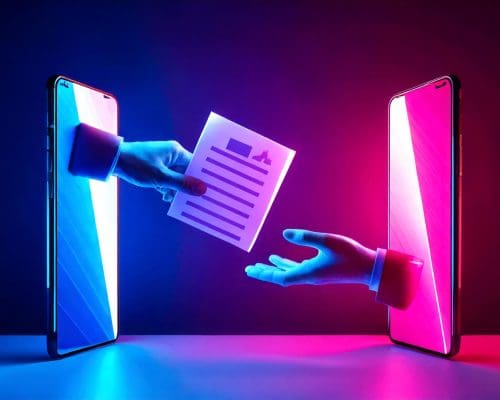Ressourcen
Immer auf dem neuesten Stand: Branchen-News, Produkt-Updates, Praxisbeispiele und exklusive Einblicke.
Filtern nach
Ressourcentyp
Thema
Industrie

Für nachhaltigen KI-Erfolg braucht es einen klaren KI-ROI
Für Unternehmen und Behörden, die auf drastische Einsparungen und steigende Gewinne durch KI hoffen, ist das ein ernüchterndes Bild. Knapp zwei Jahre nach dem Startschuss der KI-Revolution verlaufen viele Entwicklungen langsamer als erhofft.

Drei transformative CX-Trends für 2025
Predictive Dialer sind seit Jahrzehnten ein fester Bestandteil von Contact Centern. Doch im Zeitalter der KI hat sich das Spiel verändert. In einer Omnichannel-Welt, in der Kanäle wie E-Mail, SMS und soziale Medien bei der ausgehenden Kommunikation zunehmend wichtiger werden als die Sprache, wirken Predictive Dialer zunehmend veraltet.

Two-Thirds of CX Professionals Already Harnessing AI, More to Join in 2025 Despite Predicted Hesitancy
Content Guru has released research findings that reveal the widespread adoption of AI and AI knowledge in the customer experience landscape.

Content Guru and NHS England, London Region Shortlisted for the 2025 HSJ Partnership Awards
Content Guru and NHS England, London Region are delighted to announce they have been shortlisted for Best Technology Partnership of the Year at the HSJ Partnership Awards, recognizing an outstanding dedication to improving healthcare and effective collaboration with the NHS.

KI verändert die Zukunft Predictive Dialer
Predictive Dialer sind seit Jahrzehnten ein fester Bestandteil von Contact Centern. Doch im Zeitalter der Künstlichen Intelligenz hat sich das Spiel grundlegend verändert. In einer Omnichannel-Welt, in der Kanäle wie E-Mail, SMS und soziale Medien gegenüber der Telefonie bei ausgehender Kommunikation immer mehr an Bedeutung gewinnen, wirken klassische Predictive Dialer zunehmend veraltet.

Content Guru and NHS England, London Region Receive “Highly Commended” for Healthcare Sector Project of the Year at 2024 UK IT Industry Awards
The recognition highlights the success of the NHS 111 Patient Relationship Manager (PRM), a cutting-edge, cloud-based platform integrated with the national 111 telephony service. This solution, handling over 3 million calls annually, exemplifies the power of innovation in driving efficiency and improving care delivery across London’s Urgent and Emergency Care (UEC) services.

Content Guru Wins ‘The Innovation Award’ at the Lloyds Bank British Business Excellence Awards 2024
Content Guru, a leading global provider of enterprise cloud Customer Experiences (CX) and contact center solutions, has been awarded the accolade of “The Innovation Award” at the Lloyds Bank British Business Excellence Awards 2024.

Content Guru Achieves Armed Forces Covenant Employer Recognition Scheme Gold Award
The Armed Forces Covenant offers a wide variety of support to ensure members of the armed forces, veterans, and their family members have the same access to government and commercial services and products as any other citizen.

2024 Gartner Critical Capabilities For Contact Center As A Service
Content Guru has been listed for the High-Volume Contact Center use case by Gartner in the 2024 Gartner Critical Capabilities list.

Bridgepointe Technologies Partners with Content Guru to Elevate CX Offerings
Content Guru and Bridgepointe Technologies, the leading tech advisory and consulting firm in the US, are pleased to announce a new Technical Services Delivery (TSD) partnership.

Content Guru Wins 2024 CUSTOMER CCaaS Product of the Year Award
Content Guru has been awarded the accolade of ‘CCaaS Product of the Year Award’ by TMC. The award recognized the industry-leading capabilities of storm®.

2024 Gartner® Magic Quadrant™ für Contact Center as a Service
Als globaler Anbieter mit Standorten auf drei Kontinenten freut sich Content Guru, erneut im 2024 Gartner® Magic Quadrant™ für CCaaS genannt zu werden.